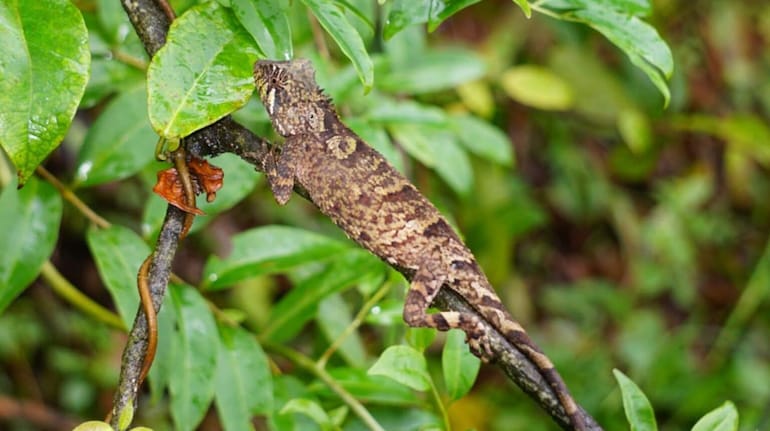



Far into the swampy forests of Vietnam's Dak Lak province, researchers have discovered a previously unknown species of pricklenape lizard. The find illustrates how much lies undetected in Southeast Asia's tropical expanse.
What is this newfound species and where did it occur?The newly found species, Acanthosaura grismeri, was discovered by a team of researchers from Vietnam and overseas. The finding, published in Zootaxa, highlights the region’s exceptional biodiversity. Researchers say Dak Lak’s thick forests, part of the Central Highlands, are still full of unrecorded wildlife.
Field surveys, genetic testing, and anatomical studies confirmed that Acanthosaura grismeri is different from other members of its genus. The discovery adds to the growing list of unique reptiles in Vietnam’s forests, a hotspot for new species in recent years.
How did researchers locate this elusive reptile? The group encountered the lizard through nighttime surveys when they saw individuals that appeared familiar but different. They were initially assumed to be part of a known species. However, closer inspection showed something peculiar — an unusual single line of sharp dagger-like spines along their back.
Main researcher Linh Tu Hoang Le of the Vietnam Academy of Science and Technology said the spines are more than a decoration; they're an identifying feature. Combined with other physical differences and genetic results, the study confirmed Acanthosaura grismeri as a new evolutionary branch of the genus.
Male lizards measure about 3 to 3.6 inches, while females grow up to 4.5 inches. Males have bright green and boldly banded brown colouration, while females have complex combinations of brown, green, and yellow to enable them to camouflage on the forest floor. Their sharp row of spines is their most striking feature and key to identification.
How did genetics confirm the discovery?Scientists relied on DNA barcoding in comparing the new species with its nearest relatives. Genetic differences between 7.82% and 25.36% were revealed in the mitochondrial COI gene, thereby proving that Acanthosaura grismeri is indeed a new species. The study also noted differences in head shape and vertebral structure.
Why does this discovery matter?This research, published in Zootaxa, shows how DNA analysis is reshaping taxonomy. By identifying species through both physical and genetic traits, scientists can better understand biodiversity and protect threatened habitats.
Recognising Acanthosaura grismeri officially gives conservationists a stronger reason to preserve the forests of Dak Lak. For scientists, it is a reminder that even in well-studied regions, nature continues to hold surprises waiting to be uncovered.
Discover the latest Business News, Sensex, and Nifty updates. Obtain Personal Finance insights, tax queries, and expert opinions on Moneycontrol or download the Moneycontrol App to stay updated!
Find the best of Al News in one place, specially curated for you every weekend.
Stay on top of the latest tech trends and biggest startup news.